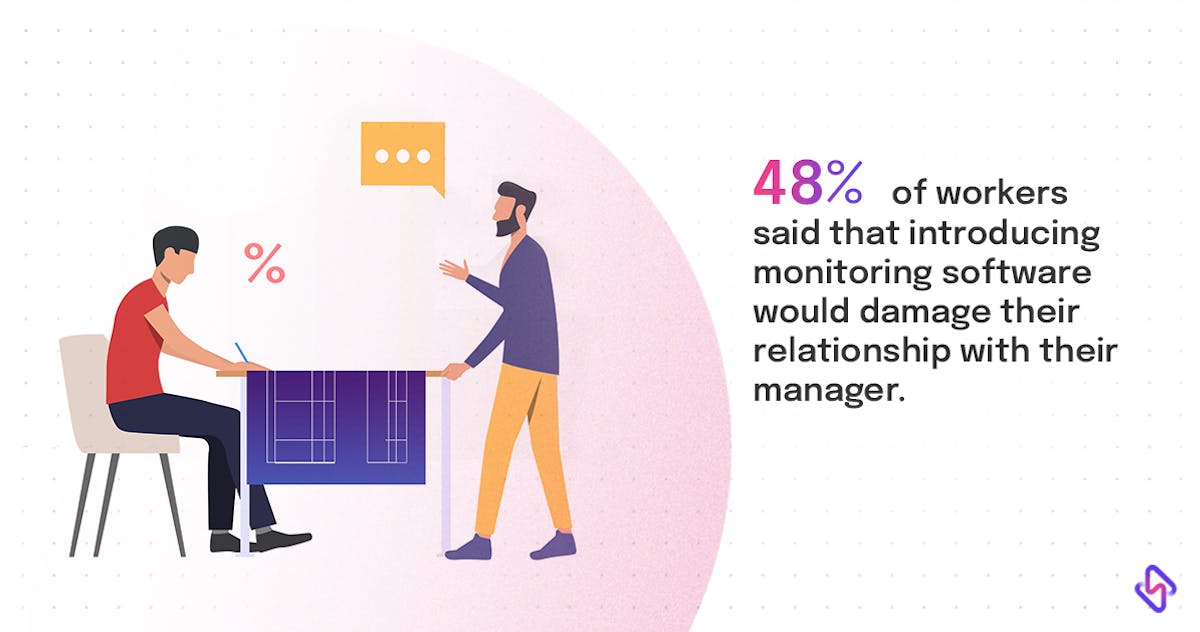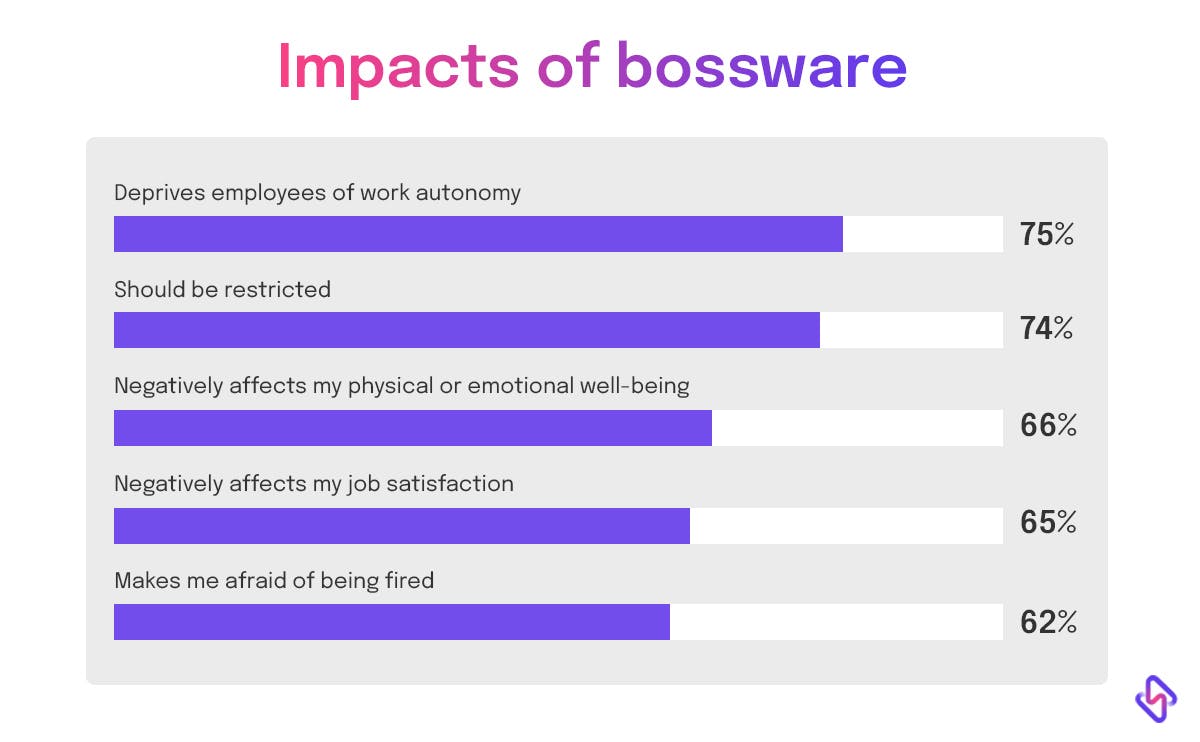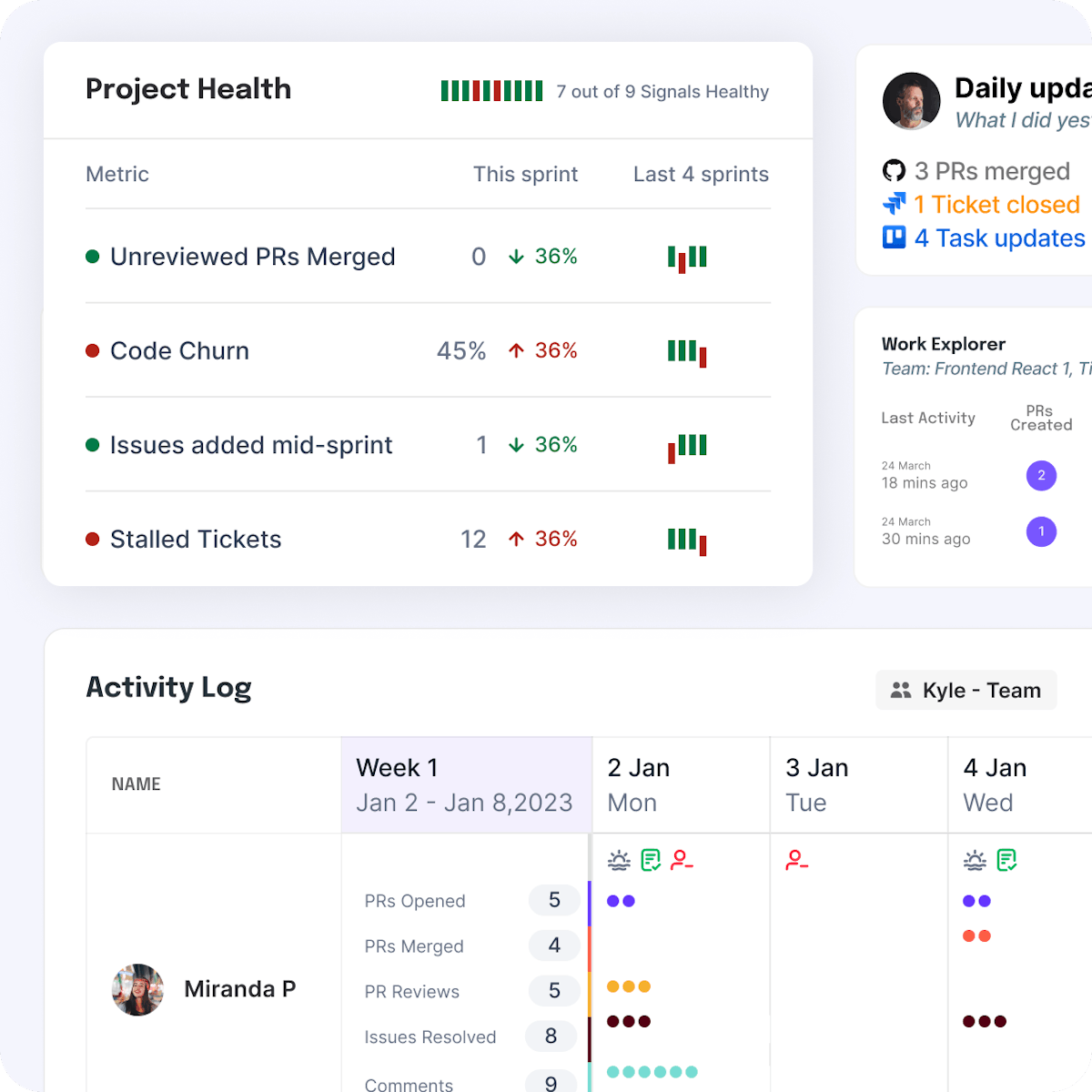Engineering teams love autonomy. The freedom to work on their own terms without micromanagement, flexibility to manage their time, work, and tool stack, along with a sense of ownership has historically made developers happier, and more productive.
Over 80% of developers seem to agree with the statement – “With greater autonomy came better innovation, and higher growth!”.
However, their desired autonomy, and trust within the system is threatened by the inevitable rise of bossware.
As more and more companies turn to remote work after the pandemic, organizations have started to virtually look over their developer’s shoulders, and deploy workplace surveillance software.
What might have started as a noble intention to track developer activities without hampering their flow state is now threatening organizational culture and overall engineering productivity.
Read this insight to know more about the menace of bossware, and how to navigate it to build happier, and more productive engineering teams.
What is Bossware?
Bossware uses the pseudonym of “productivity, and performance monitoring software” to track developer efforts, even recording every second of your work activity. The term itself suggests its primary use: it's a tool for bosses to oversee the digital activities of their teams. Some even liken bossware to "spyware" due to its capability to observe and record numerous aspects of a worker's day.
Not all bossware is created equal. Some versions, like Microsoft Productivity Score, are relatively benign, focusing on aggregating data across a team to provide general insights into application usage and offer suggestions for boosting productivity. These less invasive tools do not track individual activities but rather aim to enhance team performance holistically.
However, other versions of bossware can be more intrusive, raising significant privacy concerns. These programs can log keystrokes, access microphones and cameras remotely, and operate undetected by the user. The rise of remote work has accelerated the adoption of such monitoring technologies; it's estimated that 78% of companies now employ some form of bossware.
Historically, workplace monitoring software was designed to prevent data leaks and manage internal risks in sensitive sectors like pharmaceuticals and fintech. During the pandemic, these tools were further leveraged to maintain visibility into remote operations, aiming to streamline workflows and balance workloads without the need for constant check-ins.






